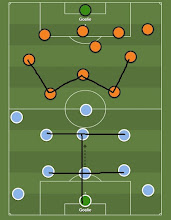The South American clubs are no longer the favourite to end UEFA’s
domination in the FIFA Club World Cup.
The 2025 FIFA Club World Cup is set to begin at the end of this week. This
expanded edition is expected to bring more competitive games and rekindle
heated rivalries at the latter stage between UEFA and CONMEBOL sides. However,
the latter reason seems rather out of reach considering the decline of the
South American teams.
Their dipped performance in the tournament, which was once known in a
one-off showdown between the UCL and Copa Libertadores champions, has been
quite distressing. The last time CONMEBOL lifted the trophy was in 2012 when
Corinthians snatched a scrappy 1-0 victory over Chelsea under Tite. Since then,
Copa Libertadores champions have not always reached the final in the
competition. In fact, in the past five editions, only three of them advanced to
the summit.
No wonder that many have doubts they could win again, including in this
year’s edition when CONMEBOL are represented by six teams. They are just half
of the UEFA teams, which are likely to dominate again, probably from the last
four.
Will Palmeiras, Flamengo, Fluminense, and Botafogo, plus River Plate and
Boca Juniors, stand no chance to even progress further, or will they bounce
back this time? None can tell, but their quality really raises the eyebrows
compared to the European sides, and such appear to be justified by the reasons
below.
The Big Gap with Europe
The most obvious one would be the big gap between two regions in terms of
almost everything. In the football world, the gap mainly stems from the
infrastructure, coaching and tactical development.
South Americans may boast of their talents, but when it comes to the clubs’
facilities, Europe is simply better. They have a better system and more modern
infrastructure with more tech support to improve players’ performance as well
as the teams. The players’ strengths and weaknesses plus potential injuries can
be detected almost instantly with the assistance of various apps.
In terms of coaching and tactical development, Europe is certainly thriving.
They have better sources and a deeper pool of talents in managerial positions.
European teams have been ahead of their contenders with updated coaching, which
can balance between developing technical and physical aspects. Such has been
applied to the younger players as well.
In South America, technical qualities are seemingly still prioritised over the physical aspects. The former Boca Juniors goalkeeper, Carlos Montoya, appears
to agree on this, which has been creating quite a setback. Such a mindset has
been going on for years, and the change has only been initiated recently.
Their Young Talents' Premature Move to Europe
Another crucial factor which leads to a big gap between South American and
European teams is the young talents paradox. The CONMEBOL sides, especially
Brazil, Argentina and Uruguay, have been well-known for being the home of great
football talents. In the past, they were nurtured by the local clubs before
eventually spreading their wings to the other continent when they were mature
enough. They most likely made a big move to Europe in their early 20s.
Today, the European giants have started their hunt for Latin America's young
stars without waiting for them to shine in major youth competitions like the
FIFA U20 World Cup. They roam to their wilderness and look to sign the raw
talents to be exported before they even reach the age of 20.
The likes of Vinicius Jr, Rodrygo, Endrick, Vitor Roque and lastly, Estevao
from Brazil and Argentina’s Emiliano Martinez, Claudio Echeverri, even Lionel
Messi himself and most recently Franco Mastantuono have already departed to
Europe before even winning prestigious trophies with their first local sides.
Such a trend is likely to continue and would definitely cost South American
teams' performance when facing off against the European giants. Thus, despite their higher enthusiasm to compete the FIFA Club World Cup, they do not likely
stand a chance to even reach the summit.
So, unless the European teams were willing to let them happen by fielding
more players from the reserved teams and ‘embracing defeat’ soon so that they
head to the exit earlier and return home sooner for resting their players, the
South Americans will still be going home empty-handed at the end of the tournament.


Comments
Post a Comment